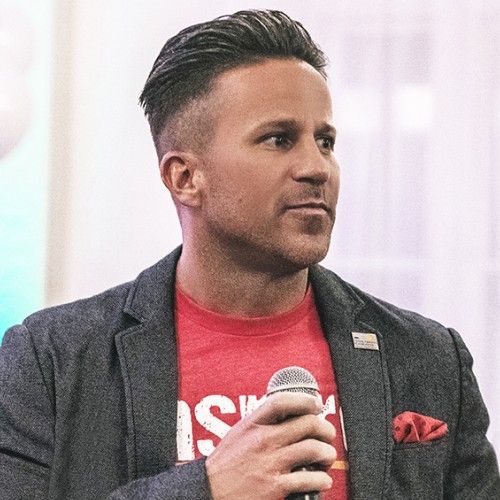Digital transformation is rarely easy, and organizational change can often create friction, requiring a thoughtful approach to shifting employee practices. Consider a financial firm’s Chief Technology Officer, Anna. She had effectively promoted a new system, one meant to replace the old, outdated technology. This switch was projected to save the firm millions of dollars annually, but the only challenge was connecting the people to the potential of the new solution.
To smooth the transition, Anna had conducted three months of required webinars. However, staff members seemed to remain distant or hesitant, resulting in push back against the new system. The root of the challenge wasn't a flaw in the technology, but a gap in the organization's willingness to adopt change.
Anna's initial strategy treated the transition as a simple technical training exercise, when in reality, it was a crucial opportunity to align the organization's workflows with its strategic goals. Her role evolved from being solely the technology executive to becoming the leader of a strategic business mandate. The change now needed to be guided by Anna with conviction, rather than simply suggested.
Anna's pivot in strategy must move from passive persuasion to one of active, deliberate integration. Her success depends on clearly defining the path forward and gently, yet firmly, showing the organization that the new system is the best, most sustainable way to work.
Four Steps to Confident, Integrated Adoption
Anna's path forward requires her to exert leadership, transforming hesitation into a shared commitment.
- Establish and Communicate the Confident Vision
The initial perception that adoption is optional needs to be dissolved by presenting the system as a clear, strategic necessity. When the firm is saving millions, the executive vision sets the strategy.
- Executive Unified Endorsement: The CTO, the CEO, and the CFO must stand together for a company-wide address. The message, delivered by the CEO, must be consistent: "This system is a strategic imperative that ensures our future competitiveness. Moving forward with this system is an essential component of our collective success." This transforms the implementation from a departmental request into a firm-wide business opportunity.
- Clear Timelines: Clear, supportive cut-off dates for the legacy systems must be announced. There must be a detailed schedule for a gradual, supported transition: "Effective December 1st, all new accounts must be processed in the new system. The legacy system will be retired and archived by January 1st." By gently guiding the organization away from the old alternative, the primary roadblock to forward motion is eased.
- ROI as the Guiding Principle: Anna must confidently reference the projected millions in ROI when any hesitation surfaces regarding customizations or procedural changes. She must clearly state that the savings are directly tied to adopting the standard, efficient configuration. Any proposed "tweak" must be framed in terms of its potential to undermine efficiency and value, encouraging stakeholders to prioritize the company's financial health over immediate personal comfort.
2. Strategic Insights and Peer Guidance
While cultivating confidence internally, external guidance from peers can help Anna validate and refine her approach.
- Join an Executive Mastermind Group: Joining a group of like-minded executives can provide immediate, practical insights on how other companies have successfully navigated large-scale changes like this. These peers can offer guidance on training methods, supportive enforcement tactics, and political dynamics unique to sweeping technological migrations. This external perspective ensures Anna's integration strategy is based on proven, real-world experiences, not just internal theories.
3. Empower Managerial Oversight and Engagement
Mid-level managers are the most crucial layer in translating confidence into daily practice. They must be empowered to take personal ownership of the outcome.
- Mandatory Collaborative Sessions: Anna should mandate that all managers dedicate a set time to do a "collaborative session" for the first two weeks post-launch. They must sit with their team members, observe them actively using the new system, and offer immediate support and feedback. This makes the adoption process their direct responsibility, replacing passive oversight with active, supportive mentorship.
- Confidence and Usage Scorecards: Managers must be required to submit weekly "Usage and Confidence Scorecards" detailing adoption statistics, remaining training needs, and employee comfort levels. This ensures that slow adoption is reframed as an opportunity for targeted managerial support in the eyes of Anna and the executive team.
4. Utilize Phased Rollout and Gently Remove the Safety Net
To prevent sticking to old routines, the old systems must be deliberately and visibly transitioned out.
- Phased System Sunset: Launch the system in phases, but follow each launch with a firm, irreversible system sunset. For example, launch the new system for creating new records first. Then, two weeks later, make the legacy system read-only for that function. This encourages the use of the new tool while retaining access to old data for reference, mitigating initial panic and building system trust.
- Visible Demonstration of Progress: Anna should have her IT team clearly mark the old servers as retired or archive the legacy application icons on desktop screens. This symbolic act reinforces the forward momentum and the finality of the successful transition.
By executing this shift from asking for tentative participation to confidently guiding the organization toward its new, efficient process, Anna can eliminate organizational doubts and ensure an invaluable return of millions. The battle for technology adoption is won by leading with confidence and ensuring the path of least resistance is the path of compliance and success in her own system.




































































